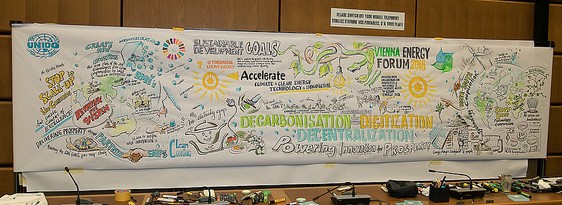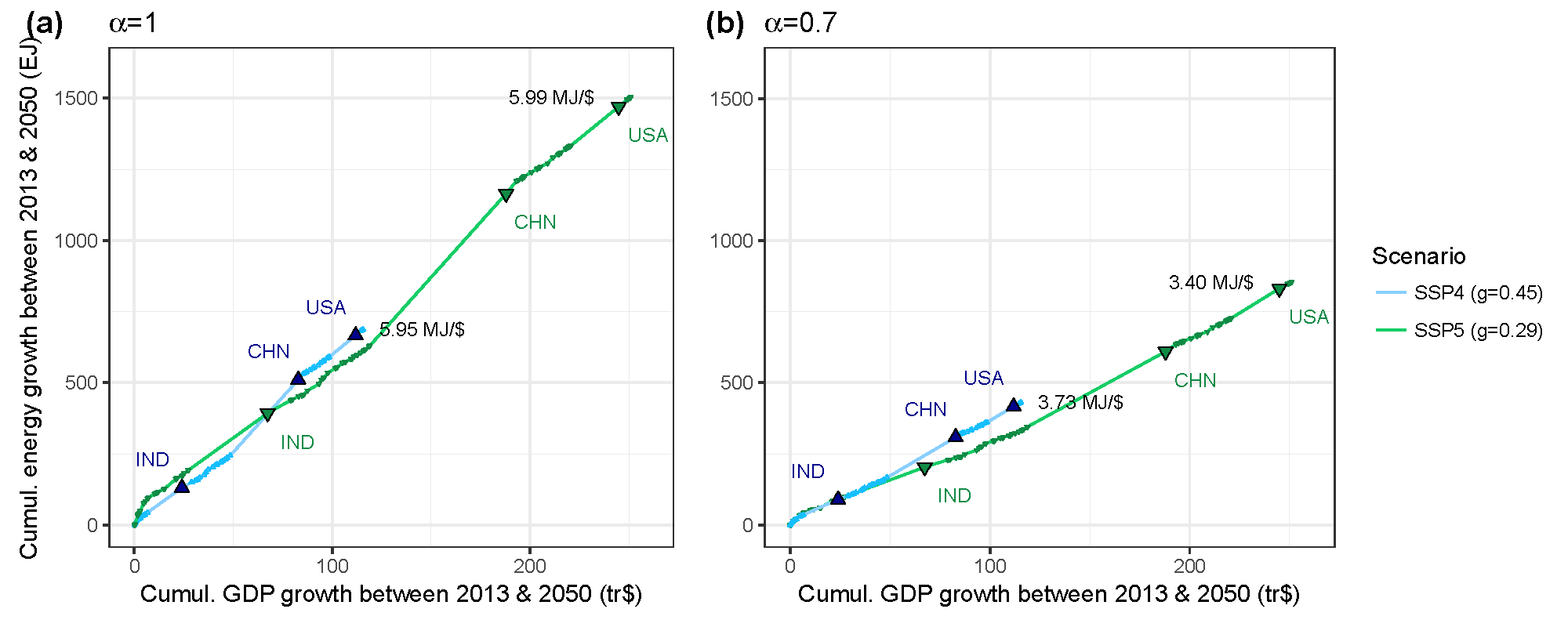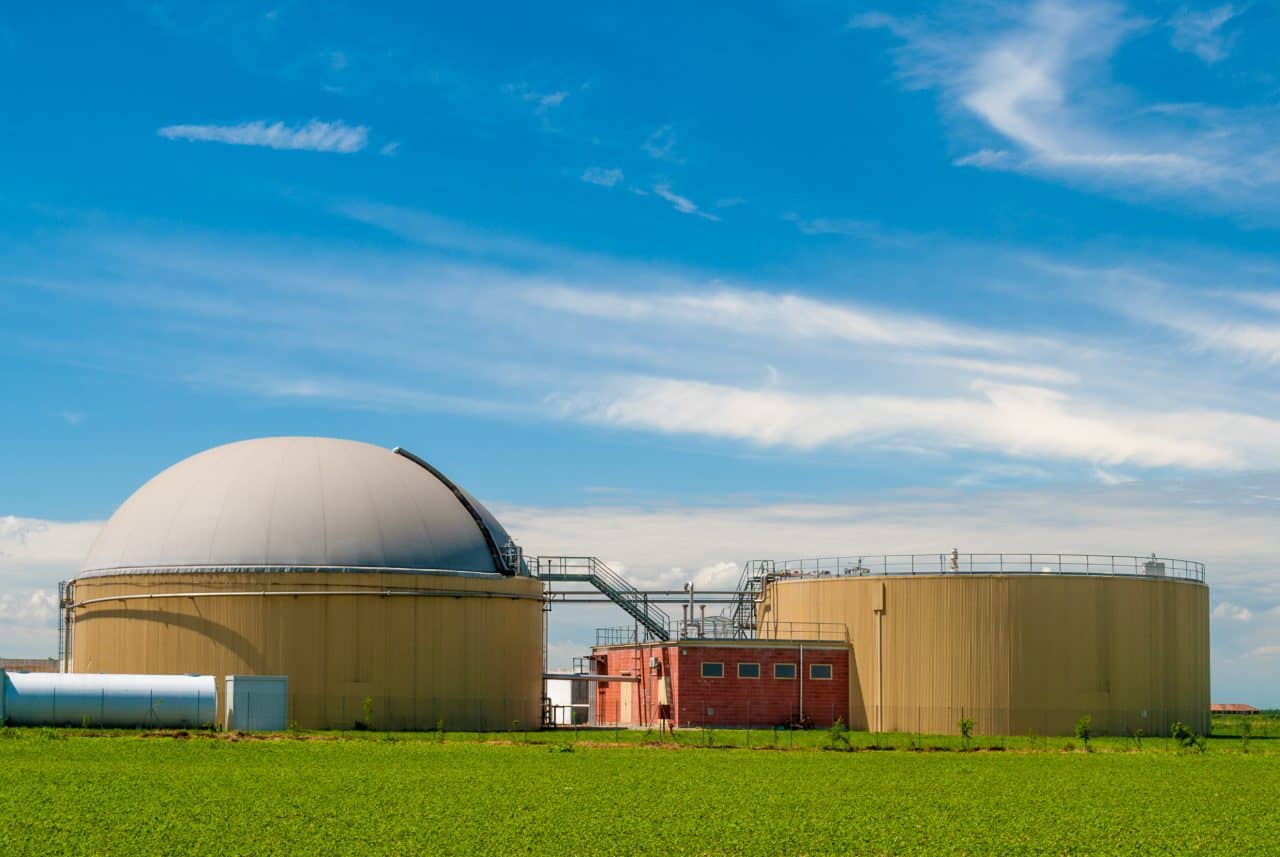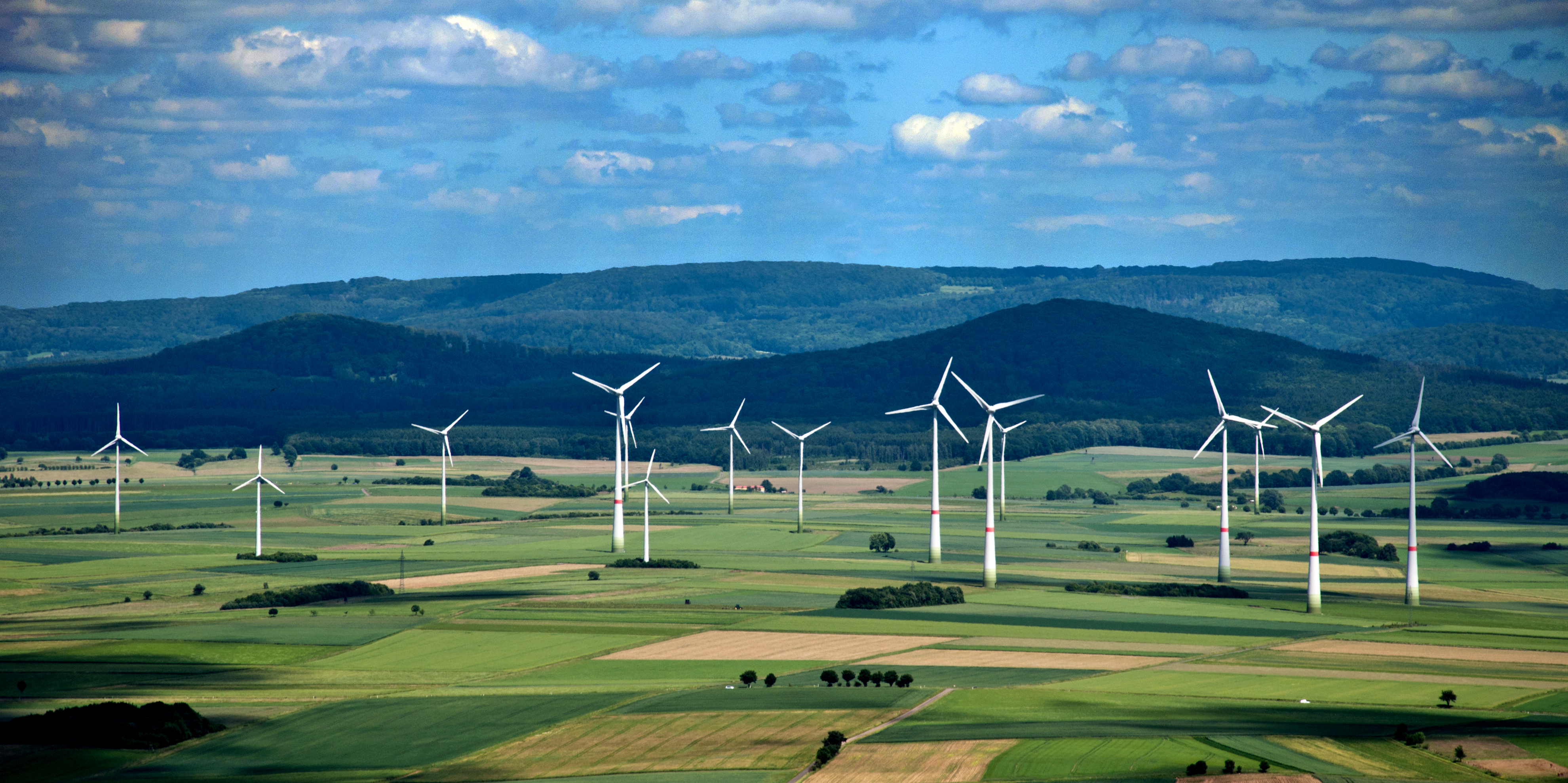Jul 17, 2018 | Air Pollution, Energy & Climate, Poverty & Equity, Women in Science, Young Scientists

© Stefano Barzellotti | Shutterstock
By Sandra Ortellado, IIASA Science Communication Fellow
When it comes to home cooking in rural India, health, behavior, and technology are essential ingredients.
Consider the government’s three-year campaign to reduce the damaging impacts of solid fuels traditionally used in rural households below the poverty line.
Initiated by the Ministry of Petroleum and Natural Gas, a program called Pradhan Mantri Ujjwala Yojana (Ujjwala) aims to safeguard the health of women and children by providing them access to a clean cooking fuel, liquid petroleum gas (LPG), so that they don’t have to compromise their health in smoky kitchens or wander in unsafe areas collecting firewood.
According to the World Health Organization, smoke inhaled by women and children from unclean fuel is equivalent to burning 400 cigarettes in an hour.
Nevertheless, an estimated 700 million people in India still rely on solid fuels and traditional cooking stoves in their homes. A subsidy of Rs. 1600 (US $23.47) and an interest free loan attempts to offset the discouraging cost of the upfront security deposit, the stove, and the first bottle of LPG, but this measure hasn’t been able to change habits on its own.
Why? Although the government has made an overwhelming effort to increase access, interconnected factors like cultural norms, economic trade-offs, and convenience require an in-depth analysis of human behavior and decision-making.

Abhishek Kar, 2018 YSSP participant ©IIASA
That’s why Abhishek Kar, a researcher in the IIASA Energy Program and a participant in the 2018 Young Scientists Summer Program (YSSP), has designed a study to explore how rural households make choices about access and usage. Borrowing from behavior change and technology adoption theories, he wants to know whether low-cost access is enough incentive for Ujjwala beneficiaries to match the general rural consumption trends, and more importantly, how to translate public perception into a behavior change.
“I think it’s really important to look into the behavioral aspect,” said Kar in an interview. “If you ask someone if they think clean cooking is wise they may say yes, but if you say do you think it is appropriate for you? The moment it becomes personalized the answers can vary.”
Kar knows that although more than 41 million LPG connections have been installed, installment of the connection does not necessarily equate to use. By gathering data on LPG refill purchases and trends, along with surveys that identify biases in the public’s perception, he wants to know how to convince rural BPL households to maintain the habit of using LPG regularly, even under adverse conditions like price hikes. If LPG is used only sporadically, LPG ownership won’t significantly reduce risk for some household air pollution (HAP)-linked deadly diseases, like lower respiratory infections and stroke.
Unfortunately, even the substantial efforts the government has made to improve LPG supply has not changed the public’s perception of its accessibility in the long term, nor its consumption patterns in the first two years. At least four LPG refills per year would be needed for a family of five to use LPG as a primary cooking fuel, which is not currently happening for the majority of Ujjwala customers.
Because the majority of Ujjwala beneficiaries have cost-free access to solid fuels from forest and agricultural fields, there is less incentive for these families to use LPG regularly instead of sporadically. Priority households for Ujjwala, especially those with no working age adults, are often severely economically disadvantaged and can’t afford to buy LPG at regular intervals.
Furthermore, unlike LPG, a traditional mud stove is more versatile and can serve dual purposes of space heating and cooking during winter months. Many prospective customers are also hesitant about the inferior taste of food cooked in LPG, the utility of the mud stove’s smoke as insect repellent, and the trade-off of expenses on tobacco and alcohol with LPG refills.
As per past studies, even the richest 10% of India’s rural households (most with access to LPG) continue to depend on solid fuels to meet ~50% of their cooking energy demand. This suggests that wealth is not the only stumbling block in the transition process.
“Whatever factors matter in the outside world, my working hypothesis is that every decision is finally mediated through a person’s attitude, knowledge, and perceptions of control,” said Kar. According to Kar, interventions can be specifically targeted to address factors that are perceived negatively either by informing people or doing something to improve that factor. Nevertheless, developing effective interventions is no simple task.
Even with a background in physics and management and eight years of experience helping people transition from one technology to another, Kar says he is grateful to have the input of a variety of scholars at IIASA, each with a different perspective and a different set of core skills and experiences. Working in the Energy program alongside IIASA staff and fellow YSSPers from all over the world, Kar puzzles out the unsolved challenge of how to create change for the rural poor.
“That has been one of my drivers, I take it as an intellectual challenge,” said Kar. “Is there a systems approach to the problem?”
For now, Kar is happy if he can return at the end of the day to his family, which he brought with him to Austria during his time as a YSSP participant, feeling like he is opening the door to a vast literature on technology adoption and human behavior, yet untapped in the field of cooking energy access.
“This research is only a very small baby step into trying something different,” said Kar, “I think this sector has so many unanswered questions, if I can at least flag that there is a lot of literature out there in other domains and maybe we can use some of it, I think that would be good enough for me.”
Note: This article gives the views of the author, and not the position of the Nexus blog, nor of the International Institute for Applied Systems Analysis.
May 28, 2018 | Air Pollution, Climate, Climate Change, Ecosystems, Energy & Climate, Women in Science
By Beatriz Mayor, Research Scholar at IIASA
On 14 and 15 May, Vienna hosted two important events within the frame of the world energy and climate change agendas: the Vienna Energy Forum and the R20 Austrian World Summit. Since I had the pleasure and privilege to attend both, I would like to share some insights and relevant messages I took home with me.

Beatriz Mayor at the Austrian World Summit © Beatriz Mayor
To begin with, ‘renewable energy’ was the buzzword of the moment. Renewable energy is not only the future, it is the present. Recently, 20-year solar PV contracts were signed for US$0.02/kWh. However, renewable energy is not only about mitigating the effects of climate change, but also about turning the planet into a world we (humans from all regions, regardless of the local conditions) want to live in. It is not only about producing energy, about reaching a number of KWh equivalent to the expected demand–renewables are about providing a service to communities, meeting their needs, and improving their ways of life. It does not consist only of taking a solar LED lamp to a remote rural house in India or Africa. It is about first understanding the problem and then seeking the right solution. Such a light will be of no use if a mother has to spend the whole day walking 10 km to find water at the closest spring or well, and come back by sunset to work on her loom, only to find that the lamp has run out of battery. Why? Because her son had to take it to school to light his way back home.
This is where the concept of ‘nexus’ entered the room, and I have to say that more than once it was brought up by IIASA Deputy Director General Nebojsa Nakicenovic. A nexus approach means adopting an integrated approach and understanding both the problems and the solutions, the cross and rebound effects, and the synergies; and it is on the latter that we should focus our efforts to maximize the effect with minimal effort. Looking at the nexus involves addressing the interdependencies between the water, energy, and food sectors, but also expanding the reach to other critical dimensions such as health, poverty, education, and gender. Overall, this means pursuing the Sustainable Development Goals (SDGs).

Vienna Energy Forum banner created by artists on the day © UNIDO / Flickr
Another key word that was repeatedly mentioned was finance. The question was how to raise and mobilize funds for the implementation of the required solutions and initiatives. The answer: blended funding and private funding mobilization. This means combining different funding sources, including crowd funding and citizen-social funding initiatives, and engaging the private sector by reducing the risk for investors. A wonderful example was presented by the city of Vienna, where a solar power plant was completely funded (and thus owned) by Viennese citizens through the purchase of shares.
This connects with the last message: the importance of a bottom-up approach and the critical role of those at the local level. Speakers and panelists gave several examples of successful initiatives in Mali, India, Vienna, and California. Most of the debates focused on how to search for solutions and facilitate access to funding and implementation in the Global South. However, two things became clear. Firstly, massive political and investment efforts are required in emerging countries to set up the infrastructural and social environment (including capacity building) to achieve the SDGs. Secondly, the effort and cost of dismantling a well-rooted technological and infrastructural system once put in place, such as fossil fuel-based power networks in the case of developed countries, are also huge. Hence, the importance of emerging economies going directly for sustainable solutions, which will pay off in the future in all possible aspects. HRH Princess Abze Djigma from Burkina Faso emphasized that this is already happening in Africa. Progress is being made at a critical rate, triggered by local initiatives that will displace the age of huge, donor-funded, top-down projects, to give way to bottom-up, collaborative co-funding and co-development.
Overall, if I had to pick just one message among the information overload I faced over these two days, it would be the statement by a young fellow in the audience from African Champions: “Africa is not underdeveloped, it is waiting and watching not to repeat the mistakes made by the rest of the world.” We should keep this message in mind.
Mar 7, 2018 | Energy & Climate
By Jessica Jewell, David McCollum, Johannes Emmerling, Christoph Bertram, David E.H.J. Gernaat, Volker Krey, Leonidas Paroussos, Loïc Berger, Kostas Fragkiadakis, Ilkka Keppo, Nawfal Saadi, Massimo Tavoni, Detlef van Vuuren, Vadim Vinichenko, Keywan Riahi
Our recent paper about our research on the effects of removing fossil fuel subsidies, published in Nature on February 8, 2018, generated a lot of comment and debate.
Here, we respond to three important themes raised in these comments. The first concerns the interpretation of our findings about the significance of subsidy removal for reducing CO2 emissions, the second concerns our approach to modeling and the data we used, and the third relates to policy options for more effective subsidy reform.

© Shutterstock / huyangshu
What are fossil fuel subsidies and why are they interesting for climate?
Fossil fuel subsidies are government interventions which decrease the price of fossil fuels below the market price. They can go to supporting the extraction of oil, gas, and coal (production subsidies) or making fuels cheaper for consumers (consumption subsidies) and amounted to over US$400 billion in 2015. There is a certain irony in that so many governments signed on to the Paris Agreement in 2015 yet in that same year many of those same governments spent so much money making fossil fuels cheaper.
How much would removing these subsidies help climate change mitigation efforts? How does it compare to what countries have already pledged to do for the climate under the Paris Agreement?
Comparing emission reductions from subsidy removal to key climate targets
Some commenters claim that it is already known that the effect of removing fossil fuel subsidies on emissions is limited. However, according to the authoritative Intergovernmental Panel on Climate Change Fifth Assessment Report (IPCC AR5), subsidy reform “can achieve significant emission reductions”. This view also is evident in the political sphere as: the Friends of Fossil Fuel Subsidy Reform, a group of countries called fossil fuel subsidy reform “the missing piece of the puzzle in the fight against climate change”.
Our findings are that fossil fuel subsidy removal would lead to a 1-4% reduction in CO2 emissions in the energy sector by 2030 if oil prices stay low, and 1-5% if oil prices rise again, compared to the rise in emissions if subsidies are maintained, the baseline. It means that subsidy reform is a modest contribution to the global reductions required to achieve 2°C in a least-cost pathway, 27-57% by 2030.
More importantly, in our paper we compare emission reductions from subsidy removal not to this ideal goal, but to the actual targets pledged in the context of the Paris Agreement. Globally, Paris pledges would reduce emissions against the baseline in the energy sector by 9-13% in 2030 (under a moderate growth baseline) which is a larger reduction than fossil fuel subsidy removal would deliver. Under both the Paris climate pledges and fossil fuel subsidy phase-out global emissions would continue to rise whereas to achieve the 2°C target they should peak and eventually decline.
Identifying the regions with greatest impact
This global assessment is only part of our study. In addition, we show how the impacts of subsidy removal are different by region. In the major oil and gas exporting regions (Middle East and North Africa, Russia and its neighboring countries, and Latin America), removing fossil fuel subsidies lowers emissions by the same amount or more than these countries’ Paris pledges. Government revenues in these regions largely come from energy exports, which are squeezed by today’s low oil prices. Lowering government spending by removing subsidies is a real political opportunity to reduce emissions in these regions.
In other developing and emerging economies (India, China, the rest of Asia and Sub-Saharan Africa), removing fossil fuel subsidies has less of an effect on emissions than these countries’ Paris pledges. In addition, the number of people who might be affected by subsidy removal in these regions is higher, simply because there are many more people living below the poverty line, for whom subsidies make the most difference. Taken together, these two findings frame one of our main results: that subsidy removal would be most useful for the climate precisely in the regions where it would affect fewer people living below the poverty line.
Data on subsidies
The second theme we would like to address relates to our data and modeling. Some commenters claimed that we underestimate both production subsidies and the effect of their removal.
According to data from the IEA and OECD only about 4% of subsidies are production subsidies. The International Institute for Sustainable Development (IISD) and Overseas Development Institute (ODI) publish an independent estimate based on their own definition and approach. Extrapolating to the global level, production subsidies would be about 14% in 2013 under their approach. We ran a sensitivity analysis using this higher production subsidies estimate. This did not change our findings (discussed in the Supplementary Information to our article).
Some commenters claimed that our study does not consider electricity production subsidies. This is also not true. We use the IEA data where power generation subsidies are captured in electricity subsidies. The SI discusses how each model integrates electricity subsidies.
There are other, fragmented estimates for electricity generation subsidies in individual countries, which generally take a different view of subsidies. For example, the recent report from IISD on Chinese subsidies to coal-fired power plants indicates that in 2014 and 2015, between 89% and 97% of these subsidies went to incentivize air pollution control equipment or closing inefficient plants. According to the same report, these subsidies also dropped by half from 2014 to 2015. Few governments would consider this as an environmentally-harmful subsidy, and removing such support will increase, not decrease emissions.
For our main analysis, we relied on IEA and OECD data for both production and consumption subsidies because these inventories are aligned with governments’ own estimates which are prepared as part of the G20 pledge to remove subsidies from 2009 reaffirmed in 2016. By using the same input data as governments and international organizations who are pledging or considering fossil fuel subsidy removal, we ensure the policy relevance of our results for these actors.
Estimating the effects of production subsidy removal
There were several comparisons of our results with those reported in a recent paper by Erickson et.al. in Nature Energy, which found that under the currently low oil prices, removing production subsidies in the US would make several oil fields unprofitable and eventually result in their closure. We find contrasting these two papers misleading as they ask very different research questions. Our study does not investigate how many oil fields in the US or elsewhere will become unprofitable after subsidy removal, but looks at the global effect of subsidy removal on emissions by taking into account trade in fossil fuels, the demand response and potential substitution of fuels and technologies. Erickson and his colleagues do not ask how much emissions will change as a result of closed oil fields. These are two very different questions.
Erickson and his colleagues compare the amount of carbon embedded in the oil reserves that may become unprofitable due to subsidy removal, to how much carbon the US would be allowed to emit under a stringent climate target. This creates an impression that they investigate the impact of removing oil production subsidies on US emissions. However, calculating the emission impact from removing oil production subsidies requires not only calculating the emissions embedded in foregone oil production, but also the possible emissions resulting from replacing this lost oil with other fuels, or changes in demand, for example if Americans choose to drive less if wells are closed, or if the US imports oil instead. We use these types of feedbacks in our models to calculate the emissions effects of subsidy removal (both consumption and production).
Redirecting subsidy funds
The third theme raised in the comments to our article was why we did not model redirecting subsidies to supporting renewable energy. While this is a very tempting question to ask from a climate perspective, and certainly one which we could do in our models, we did not consider it a realistic policy to be prioritized in our scenarios. In most countries fuel subsidies were introduced to support those on low incomes, although it is an inefficient way to do so. A state budget deficit and today’s low oil prices can often prompt successful subsidy reform. Indonesia for example recently expanded spending on infrastructure and programs to reduce poverty, while India introduced vouchers for cooking fuels. Iran, meanwhile introduced universal health coverage.
Fossil fuel subsidies do need reform
We would like to express our agreement with two comments, one from Ian Parry who wrote a commentary to our paper in Nature, and another from David Victor in his statement to Scientific American, that there are many reasons to reform fossil fuel subsidies other than emissions reductions. Our article does not cover these reasons and should not be interpreted as a comprehensive assessment of all aspects of subsidy removal.
We do however hope that our transparent and rigorous assessment of the effects of subsidy removal on CO2 emissions and energy use will support realistic and effective subsidy removal policies, and help in understanding the relative importance of a range of emission-reduction measures needed for achieving the ambitious long-term targets of the Paris Agreement.
As some commenters pointed out, we need all tools in the box to combat the enormous challenge of climate change. We fully agree. At the same time, we also believe in the need to understand how much each tool can do and where it can be most effective. This is exactly what our study answers.
Reference
Jewell J, McCollum, D Emmerling J, Bertram C, Gernaat DEHJ, Krey V, Paroussos L, Berger L, Fragkiadakis K, Keppo I, Saadi, N, Tavoni M, van Vuuren D, Vinichenko V, Riahi K (2018) Limited emission reductions from fuel subsidy removal except in energy exporting regions. Nature DOI: 10.1038/nature25467
Note: This article gives the views of the author, and not the position of the Nexus blog, nor of the International Institute for Applied Systems Analysis.
Jan 22, 2018 | Energy & Climate, Poverty & Equity
By Narasimha Rao, Project Leader of the Decent Living Energy (DLE) Project, IIASA Energy Program
Is there a conflict between reducing global income inequality and combating climate change? This seems like an odd question, given that these challenges have a lot in common. Raising the living standard of the poor for example, makes them resilient to climate impacts; less inequality can mean more political mobilization to establish climate policies; and changes in social norms away from material accumulation can reduce inequality and emissions. Academics have however been curious about the following phenomenon: In many countries, a dollar spent at higher income levels is less energy intensive than at lower income levels (known as “income elasticity of energy”). That is, rich people – although they consume much more in total – spend additional income on services or can afford energy-efficient goods, while the new middle class buy energy-intensive goods, like appliances and cars.
Many imagine China as a template for this type of fast growth. If globally significant, this effect would imply that growth that is more equitable would also be more emissions-intensive, and that we would have to pay particular attention to ensuring that climate policies reach the rising middle class in developing countries. While several studies have examined this phenomenon in specific countries, no one has examined its global significance. We set out to do that.

Energy intensity (MJ per $) lower in a high-growth, low inequality world (green line, Gini=0.29) compared to a low-growth, high inequality world (blue line, Gini=0.45). Gini reflects between-country inequality only.
Our analysis suggests that the energy-increasing effect of lowering inequality is more of a distraction than a concern. We compared scenarios of equitable and inequitable income growth, both within and between countries, assuming the most extreme manifestation of the income elasticity. Within any country, given the slow pace at which inequality typically evolves even with the most extreme known income elasticity and reduction in country inequality, greenhouse gas emissions would increase by less than 8% over a couple of decades. However, when one considers a more equitable distribution of growth between countries, global emissions growth may decrease when compared to growth that occurs in industrialized countries. This is because poorer countries have more potential for technological advancements that reduce the energy intensity of growth than richer countries do. That is, more income growth in poorer countries provides more opportunity for efficiency improvements that influence the emissions of very large populations. Furthermore, China is a poor model for poor countries at large, many of which have relatively low energy intensities, even today.
Climate stabilization at the level aspired to by the Paris Climate Agreement requires that we (i.e. the world) decarbonize to zero annual emissions around 2050, which means that even developing countries have to make aggressive strides towards integrating climate goals into development. Nevertheless, there is no sufficient basis for considering that equitable growth, and by implication the poor’s energy intensity, is part of the problem. To the contrary, the potential for co-benefits from equitable growth for climate change are enormous, but unfortunately under-explored, particularly in quantitative studies. Research should focus on quantifying the role of changing social norms – less consumerism, political mobilization, and other social changes that are typically associated with lower inequality – on reducing greenhouse gases.
Reference:
Rao, ND, Min J. Less global inequality can improve climate outcomes. Wiley Interdisciplinary Reviews: Climate Change. 2018;e513. https://doi.org/10.1002/wcc.513
Note: This article gives the views of the author, and not the position of the Nexus blog, nor of the International Institute for Applied Systems Analysis.
Apr 10, 2017 | Energy & Climate
By Piera Patrizio, IIASA Ecosystems Services and Management Program
Biogas–renewable fuel that can be produced from a variety of natural materials including manure, food waste, plant matter, and other organic matter–has the potential to solve a number of environmental challenges simultaneously: It can reduce the emissions of greenhouse gases such as methane (for example, from manure storage) and is the only mature type of renewable energy that can be directly used in electric power generation, heat generation, and transport sectors, and it leads to reduced impacts of pollution from waste disposal.

Biogas can be produced from crops like maize as well as waste and ohter organic materials © Giuliano Del Moretto | Shutterstock
However, biogas is not without impacts of its own. The environmental benefit of using agricultural biogas in particular may be smaller than previously thought, because of the farming activities required for the production of suitable biogas feedstock (such as maize, wheat and triticale), which in turn generates local airborne pollution. Such factors are not adequately reflected in current energy measures.
In other words, existing policy instruments that have been adopted so far in Europe do not reflect the environmental impact associated with the production of certain biofuels because they do not account for other relevant environmental burdens generated along the supply chain.
This is especially the case for biogas, whose production contributes to several environmental burdens such as land use, traffic, and local emissions from the intensive use of fertilizers.
To overcome this issue, my colleagues and I have proposed the adoption of a monetization procedure through which the so-called external costs are incorporated in energy wholesale prices. This method, allows to allocate a cost to the environmental damage associated with emissions of a wide range of pollutants, which can be consequently incorporated in any economic optimization model.

Biogas production plant, Italy © Roberto Lo Savio | Shutterstock
In a new study, which I conducted with Sylvain Leduc and Florian Kraxner, we took a look at the biogas situation in my home country, Italy. We incorporated the total internal and external costs of different biogas utilization pathways in the BeWhere model—a model used for optimizing renewable energy systems–and compared with the performance of the current Italian energy mix.
We found out that, although each type of biogas leads to reduced CO2 emissions compared to fossil fuels, such environmental benefits are sharply reduced when we take other pollutant emissions into account. .
In particular, farming activities generate high non-carbon emissions such as nitrogen oxides (NOx), sulfur dioxide, and particles. Most of this pollution comes from chemical fertilizers and diesel combustion in farming activities–and these emissions corresponding to almost 6% of the energy content of the raw biogas produced.
The second cause of external costs is transportation of the biomass, which mainly produces local emissions of NOx. Local concerns about this issue, are a main source of opposition to new plants, and based on our study, these concerns appear reasonable.
Our results suggest that carbon emission mitigation alone is not always a satisfactory measure to evaluate the sustainability of biogas technologies in order to define energy policies. Other environmental burdens need to be considered when we discuss the environmental sustainability of energy production processes.
Reference
Patrizio P, Leduc S, Chinese D, & Kraxner F (2017). Internalizing the external costs of biogas supply chains in the Italian energy sector. Energy 125: 85–96
This article gives the views of the author, and not the position of the Nexus blog, nor of the International Institute for Applied Systems Analysis.
Mar 21, 2017 | Climate Change, Energy & Climate, Science and Policy, Young Scientists
By Jessica Jewell, IIASA Energy Program
Why have Germany and Japan, two large, and in many respects similar developed democracies pursued different energy options? A recently published study examines why Germany has become the world’s leader in renewable energy while phasing out its nuclear power and Japan has deployed only a trivial amount of renewables while constructing a record number of nuclear reactors.
The widespread story is that Germany rejected nuclear power in a politically bold move after Fukushima and instead pursued ‘Energiewende’ prioritizing wind and solar energy to combat climate change. Leading scholars such as Amory Lovins described Japanese policymakers as manipulated by the nuclear lobby, clinging to their old ways, and unwilling to properly support renewable energy. The lesson to other countries is that public anti-nuclear sentiments and a capable democratic government is what it takes to turn to decentralized renewable energy.
This research shows that these stories are myths. As I and my coauthor wrote in a letter to the editor in Nature last year, Japan had ambitious renewable targets already before Fukushima and there is no evidence that these have been affected by its nuclear plans. The same holds for Germany: its targets for renewable energy were not affected by the change in its nuclear strategy following Fukushima’s disaster in 2011.

© nixki | Shutterstock
In fact, the differences between Germany and Japan started not in 2011 after Fukushima, but some 20 years earlier in the early 1990s when Japan’s electricity consumption was rapidly growing and it desperately needed to expand electricity generation to feed demand that could not be matched with very scarce domestic fossil fuels. Furthermore, Japan was developing ‘energy angst’ related not only to its high dependence on Middle Eastern oil and gas but also to potential competition with China’s with its rising appetite for energy. At the same time, Germany’s electricity consumption stagnated in the 1990s and its energy security improved following the end of the Cold War. Germany was also one of the world’s largest coal producers and could in principle supply all its domestic electricity from coal. As a result, in the 1990s, Japan was forced to build nuclear power plants, but Germany could easily do without them.
There was another important development in the early 1990s: wind power technology diffused to Germany from neighboring Denmark. This was triggered by an electricity feed-in-law of 1990s, which obliged German electric utilities to buy electricity from small producers at close-to-retail prices. The law, which aimed to benefit a small number of micro-hydro plant owners, unexpectedly led to almost a 100-fold rise in wind installations in Germany. Although still insignificant in terms of electricity, this development created a large and vocal lobby of owners and manufacturers of wind turbines. In the early 2000s, the wind sector provided less than one-tenth of nuclear electricity but had more jobs than in the nuclear sector. In contrast, Japan’s similar policies of buying wind energy from decentralized producers did not result in any considerable growth of wind power, because the Danish technologies prevalent in the early 1990s could not be as easily diffused to Japan.
By the turn of the century, the electricity sectors in Germany and Japan still looked largely similar, but the political dynamics could not be more different. In Germany, a huge politically-powerful coal sector was represented by Socio-Democratic Party and the so-called ‘red-green’ coalition was formed with the Green party, who represented the rapidly growing wind power sector. The stagnating nuclear industry, however, had not seen new domestic orders or construction for 15 years and large industrial players like Siemens had begun to diversify away from it. All this was in the context of a positive energy security outlook and declining electricity prices. In contrast, in Japan, the nuclear sector had vigorously grown over the last decade and was becoming globally dominant by acquiring significant manufacturing capacities. Nuclear power was the only plausible response to the energy angst and it lacked any credible political opponents: the domestic coal sector in Japan virtually did not exist (Germany had around 70,000 coal mining jobs, Japan – about 1,000) and wind had never taken off.

© Pla2na | Shutterstock
The results of these very different political dynamics were predictably different: the red-green coalition in Germany legislated nuclear phase-out in 2002 and unprecedented financial support for renewables in 2000, while retaining coal subsidies and triggering construction of new coal power plants. Japan continued to support solar energy in which it had been the global leader since the 1970s but it also adopted a plan for constructing many more nuclear reactors designed to substitute imported fuels. Fukushima, rather than highlighting differences actually made the energy trajectories of two countries more similar as both countries began to struggle to replace their aging nuclear capacities with new renewables.
How does this story relate to wider questions such as: why are some countries more successful in deploying renewables than others? The answer is not in ‘stronger political will’ and in the strength of climate change concerns, but in economy, geography, and the structure of energy systems. Political wins for renewables and the climate can also be the result of dubious political compromises such as the alliance with the coal lobby in Germany, which led to the rapid growth of renewables and demise of nuclear power. It may be particularly difficult for countries with fossil fuel resources to implement renewable energy policies if they lead to the contraction of domestic coal, gas or oil industries.
Reference: Cherp A, Vinichenko V, Jewell J, Suzuki M, & Antal M (2016). Comparing electricity transitions: A historical analysis of nuclear, wind and solar power in Germany and Japan. Energy Policy 101: 612-628.
Acknowledgements
The study was supported by the CD-LINKS project and the Central European University’s Intellectual Theme’s Initiative.
This article gives the views of the author, and not the position of the Nexus blog, nor of the International Institute for Applied Systems Analysis.











You must be logged in to post a comment.